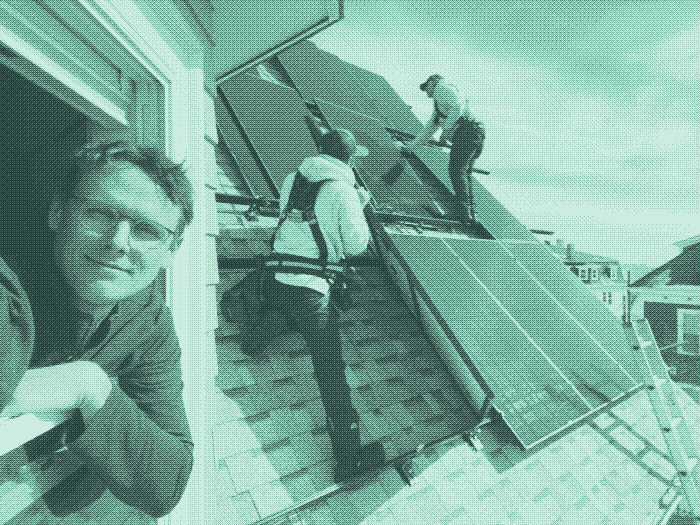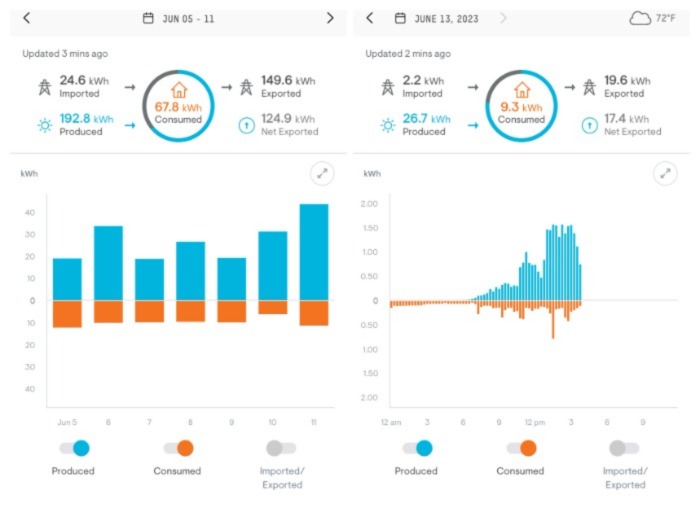
Our home solar journey in Massachusetts, 2022-2023
Embarking on a solar journey
Our house has excellent southern exposure and a favorable roof angle, making solar photovoltaic (PV) systems an ideal fit. Furthermore, the attractive incentive programs in Massachusetts added to the feasibility. However, we delayed the installation after replacing our roof in 2019 and temporarily moving away for a couple of years, as we couldn't sell the surplus electricity to tenants. Reflecting now, the immediate installation would've been wiser as the price per watt increased during the interim, and we returned home in late 2021.
Navigating the initial stages was perplexing. Thankfully, I had friends in the industry who offered insightful advice at various junctures, which I wish to share here to assist homeowners who might be similarly grappling with not knowing where to start. The project has worked out for us so far, so I am sharing some of crucial decision-making stages and insights from research, calls, and on-site coordination.
Start by getting several quotes
EnergySage's user-friendly platform helped garner several detailed quotes. Although we didn't proceed with any of the listed companies, we used their quotes to negotiate better deals with well-known, reputable installers in our area. Other platforms similar to EnergySage might also be helpful.
I used the quotes from EnergySage to bargain with two installers we were considering. Both had initially quoted higher installation prices, but referencing competitor prices helped us secure a better deal.
Selecting the system
Comparison table of quotes and technology and terms
| Provider | Selected (Enphase) | Local (SolarEdge) | EnergySage 1 | EnergySage 2 |
| Panel | Rec Alpha 405 | Solaria PowerX-400R | Q CELLS DUO BLK | Panasonic EVPV400 |
| Warranty | 25 year inc labor | 25 year inc labor | 25 years only parts | 25 years only parts |
| Inverter | IQ8+ Microinverter (MC4) | SolarEdge SE10000H | ||
| Panels | 21 | 21 | 21 | 21 |
| Watt/panel | 405 | 400 | 360 | 400 |
| System size (kW) | 8505 | 8400 | 7560 | 8400 |
| Price/watt | $3.83 | $4.20 | $2.90 | $3.62 |
| Cash purchase | $32,555 | $35,299 | $21,924 | $30,408 |
| 30% tax credit | $9,767 | $10,590 | $6,577 | $9,122 |
| State tax credit | $1,000 | $1,000 | $1,000 | $1,000 |
| Rebate | $750 | - | - | - |
| SMART estimate | $5,000 | $5,000 | $5,000 | $5,000 |
| Total | $16,039 | $18,709 | $9,347 | $15,286 |
| Final price/watt | $1.89 | $2.23 | $1.24 | $1.82 |
Choosing between Enphase microinverters or a SolarEdge inverter was challenging. The SolarEdge system intrigued me with its efficient DC-to-DC coupled charging, potentially bypassing the inefficiency of DC microinverters that invert the AC back to DC to charge the battery. However, it required an upfront additional cost of $13k for a battery-compatible system. Following a consultation with a friend in the industry, I opted for the more "open protocol" microinverter option, which allowed for potential future battery additions from manufacturers like Enphase or Tesla. Finally, regarding the bottom line, the $16,039 price tag equates to between a 5 and 6 year payback period for $250/month electricity spending between the two units in the house.
Finishing the contract
We were fortunate to work with a local firm recommended to us. They delivered a professional installation, ensuring their warranty covered both parts and labor. They expertly routed the wires from the solar panel into the basement through the chimney chase, thus eliminating the need for an external conduit on the house. If you need a referral, feel free to contact me.
Understanding the incentives
The tax rebate becomes effective once the panels are installed. Although we made most of the payment in 2022, the panels were installed in 2023, so our tax credits will be claimed in 2024. An important point to note for planning.
Activation in Massachusetts takes too long
Our solar was installed on March 1 and not activated until May 22, with several touch points along the way with inspectors and Eversource. Given Massachusetts' bureaucratic process for permits I was not surprised. However, hearing that the process took only two business days in San Diego, California, highlights the need for greater efficiency, especially considering the current climate crisis.
Planning future upgrades
Our solar system is designed to cater to 250% of our current usage, with plans to eliminate gas usage and offset the second unit in our house, thereby utilizing solar energy for heating, cooking, and driving.
Screenshot of the dashboard for a week and a day, showing current excess capacity
 Created 2023-06-15
Created 2023-06-15